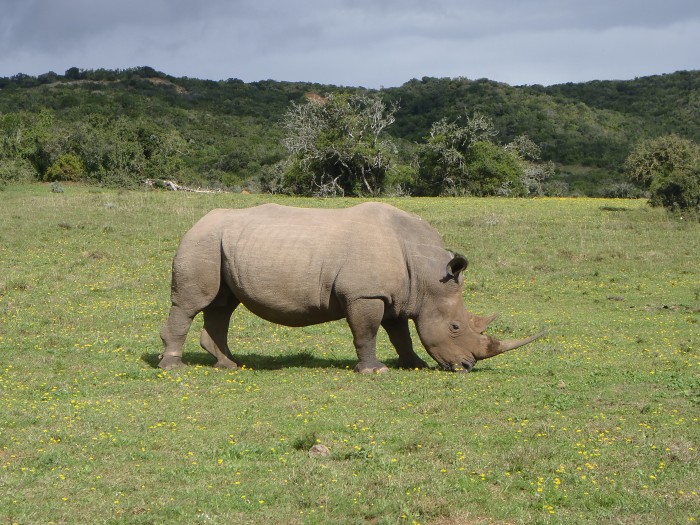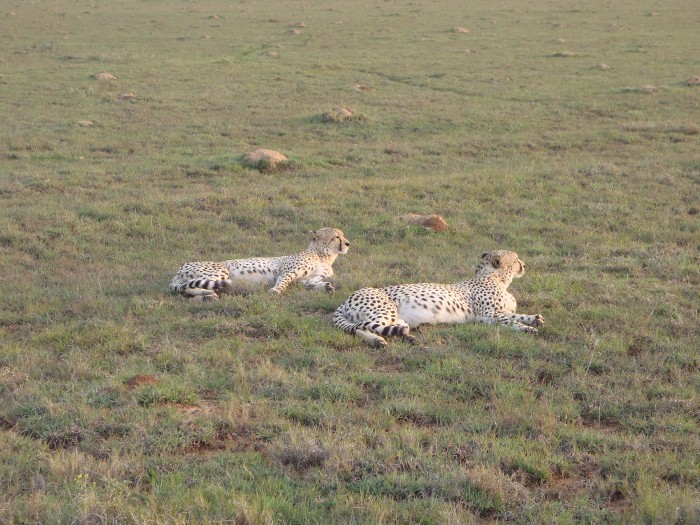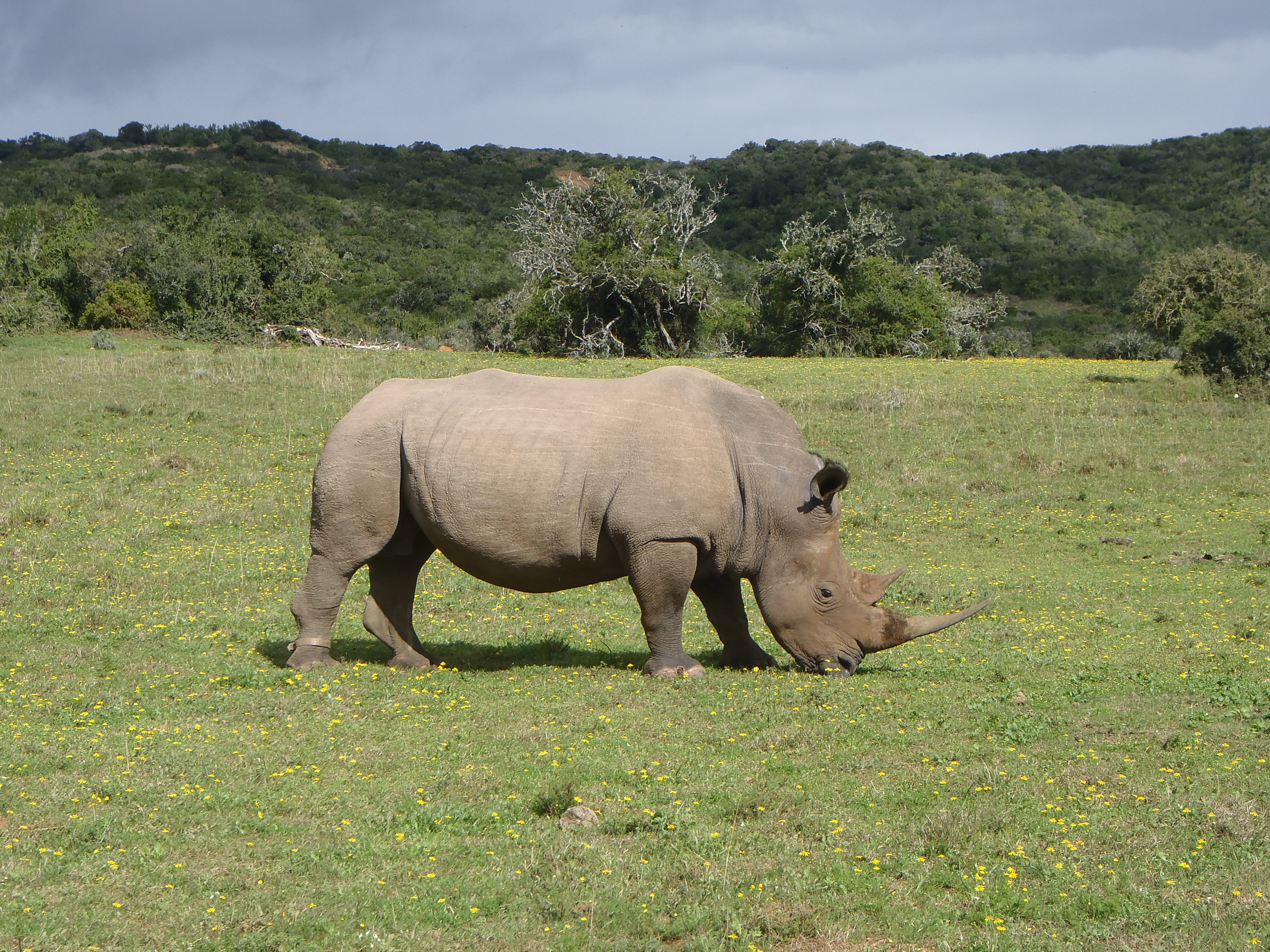You may remember we recently posted a blog by Jacob in which he explained his love for the Shamwari Conservation Experience and why he was heading back. Well Jacob has now returned from his second trip to the reserve and has kindly put together a two piece diary detailing his exploits:
Day 1 – Tuesday the 18th of August – Monitoring the ellies
The morning of our first day in Shamwari was spent in the southern region of the reserve, on an activity termed Elephant Monitoring. The vast expanse of Shamwari is home to a large population of Elephants, naturally forming four separate herds of varying ages. These Elephants must graze, browse and consume a huge amount of the reserve’s natural fauna in order to meet the metabolic demands of a megaherbivore. Due to this, the rangers informed us that their number, diet and relative appetite could be ecologically transformative. Its paramount that the preferred plant species in the diet of the herd, sometimes formed of over 25 individuals, is regularly documented and monitored to avoid the ecological risks associated with overgrazing.
An elephant will sometimes bring down a whole tree in order to reach a select part or a couple pieces of fruit – the same tree could have formed the habitat of an indigenous bird species, with its destruction increasing light penetration for the promoted growth of grassland plants. Overgrazing with elephant numbers is therefore associated with total landscape transformation, a problem that has occurred throughout the history of the Kruger National Park, the Chobe and Addo Elephant Park. In order to update the reserve’s documents on Elephant diets, we volunteers individually selected Elephants and watched them for intervals of two minutes, documenting the plant species they were eating and the area we found them in. This way we could simultaneously perform a population count, checking for new additions to the herd. Having spent a few hours with the herd, ‘Elephant monitoring’ eventually became an excuse to sit and marvel at the ellies, with Konrad, Chanel and Sihkle giving us an in depth insight into the familial networks of the elephant herd, and the social hierarchy that subsequently forms. After a few hours watching the animals you really start to see just how socially intelligent they are, with the characteristics of each individual animal being the most obviously complex and distinctive in the animal kingdom.
Shamwari has a complex, arteriole like network of roads that spans across the reserve. In an effort to sustain all the naturally occurring plant life the patrolling vehicles are restricted to these roads, and hence they have to be managed for accessibility and comfort. We spent a few hours developing our machete skills from a state of amateur incompetence to a semi-professional swipe, clearing bushes from the roadside. It was great to get a feel for the behind the scenes maintenance work that goes on at Shamwari, without which the reserve would be unable to generate revenue for conservation and research purposes.

Day 2 – Wednesday 19th August – Poaching and hunting
Coming to the reserve in the winter leaves your schedule in the oversized hands of the elements, and with the rain coming down with a pious determination we took the opportunity to have a look at the latest developments in the issue of poaching. Chanel gave us an informative lecture that defined poaching as the capture, killing, translocation and harvesting of both animal and plant species. In the current climate of exponential demand in China, Vietnam, the Yemen and Japan for Rhinoceros horn for medicinal, cultural and social purposes, the efforts in place to prevent Rhinos from being poached on the reserve have become diversified and innovated. The response from privately owned game reserves have attempted to reduce the impact on Rhinos, but with a diluted population of people with a disposable income in consumer countries, able to afford the horn, the demand has sadly increased, despite educational efforts.
It seems like such a simplistic solution to educate the two effecting tiers of the poaching pyramid, the consumer population and the harvesting population. Educating generations below the consumer in the countries demanding the horn, as to the horns complete biochemical inertia and medical redundancy would eventually remove the demand as generations build. Similarly urging the poorer communities in Southern Africa to cherish their wildlife, both for heritage and cultural integrity, as well as to sustain the financial benefits that tourism brings. Sadly this is not a feasible option – there are not enough Rhinos left for this tactic to be employed, and the shameful reality of the situation is now damage limitation. Shamwari is equipped with a sophisticated anti-poaching unit, and it was great to gain insight in to the high tech strategies and sponsorship that allows the team to function to the highest standard. What was so interesting, rather regrettably, was looking at the lengths the trade went to in order to locate Rhinos. The ‘industry’ has become so sophisticated and populated that geo tagged photos posted on social media by naïve travellers can be decrypted to pinpoint the photographed Rhinoceros geographically. With such sophistication on either side of the battle, it is not merely an issue between Africa and consumer countries, but an issue for humanity.

When the rain eventually gave up and our minds had been simultaneously informed and riled by the recent activity of the Rhino horn trade, we set out for the reserve to clear some troublesome eucalyptus trees of Australian origin. Alien vegetation can have a portentous effect on the naturally occurring plant species, potentially outcompeting them for resources such as nitrogen, water and sunlight. This would warp the diet of the reserves herbivores, transforming the ecosystem entirely. Non-native species must therefore be managed and removed from the reserve to sustain the biome’s ecology. Particularly with the eucalyptus tree, alien vegetation, with different sensitivities to heat and less heat labile enzymes pose a greater fire risk and cause fires more easily than native species. Some of these foreign species are occurring on the reserve due to farming – eucalyptus oils are farmed and harvested in South Africa for the cosmetic trade. Our skills with a machete were by this point edging on the professional, a great time to stop for the afternoon and get on with something more useful, like staring at the Northern pride of Lions. We did try to use telemetry to locate a collared Cheetah who had recently had four cubs, and had not been sighted on the reserve for some two days. Even the most sophisticated tracking technologies are not guaranteed to locate the reserves Cheetahs, so scarce in number. I’ve found that this is the most enjoyable aspect of being on the reserve – the nature of the animals and the dynamic fibres of the ecosystem means you aren’t guaranteed to see any animals, but on the flip side you could stumble across each animal at any time.
Day 3 – Thursday the 20th August – The Born Free Centre
We woke up on Thursday morning fuelled with anticipation for what we expected to be the day we most wanted to write home about. We hauled ourselves onto the four by fours and raced through the rain to one of two Born Free sanctuaries on the reserve. The Born Free Foundation aims to rescue, house and rehabilitate big cats from a life of captivity, many from the most harrowing conditions imaginable. This was to be a morning in which we saw first hand the devastating effects of the black market exotic pet trade that tears though the ecosystem of South Africa, leaving pain and disruption in its wake. Each of the Born Free centres at Shamwari holds up to 8 lions, cheetahs and leopards in large enclosures. These enclosures are designed to balance a replication of natural habitat with facilitating easy monitoring of the cats’ progress and wellbeing. Each of the cats’ stories, told with a passionate lament by the manager Glen, was haunting in its own right; one lion had been kept by Charles Taylor at the bottom of a well and fed only on scraps of chicken; three triplet leopards had been kept as fear mongering pets on leashes in a basement by the Sudanese military; another white lion had been kept in a 2m cage on top of a restaurant in Tenerife; many came from Romanian circuses and household basements, their rescue facilitated by Romania’s recent entry into the EU.
The common denominator to their painful histories however was the most harrowing part of the experience; they had all fallen victim to the dark heart of human vanity, pride and cruelty. On paper this manner of conservation seemed instinctively counter intuitive in a reserve whose core aims run directly against all forms of captivity. However once we were introduced to ‘the cats’ and told their heartbreaking stories, it became clear to each one of us that this solution of captive rehabilitation really was the only sustainable, and clearly the most compassionate, option. It was emphasised continually that this was not a zoo, and as such the small viewing platforms for luxury guests were first and foremost positioned with the animals’ comfort in mind rather than ease of viewing. However, as volunteers we were permitted to approach the enclosures, under strict conditions in order to best manage the stress to the nervous cats. These small, patchy coated and limping creatures following years of malnutrition, seemed robbed of the majestic quality we had seen thus far everyday in the wild lions on the main reserve. This contrast was made all the more poignant by the occasional vocal interaction between the Born Free lions and the wild lions on the other side of the fence. It brought reality crashing down for us that these beautiful but damaged creatures could never be released into the wild and would never roam free. They would never survive the social hierarchy of the free lion pride, even if they survived the elements and learned to hunt. Despite this saddening realisation our experience at Born Free carried an encouraging message. Whilst the cats at Born Free would never hunt for themselves, their healthy counterparts, thanks to the tireless efforts of conservation teams, would not end up in the hands of poachers, chained to a Municipal park fountain or fed only on chicken wings and cows milk in a Romanian basement. We left the sanctuary with an invigorated respect for the lions, cheetahs and leopards we encountered on the main reserve and a realisation of just how lucky we were to be in such close proximity to cats in their physical prime and natural environment.

That afternoon we had free for a bit of well needed r and r before our much anticipated first night drive. We piled into the vehicle loaded this time with 4 layers, hot water bottles and flasks to guard against the driving rain and bitter wind in the windowless industrial Land Cruiser. However we did not let this dampen our spirits as the dynamic nature of the project was again highlighted by the reason for the night drive on that night; the lions had made a kill. Not long after setting off our searchlight found a bathing female hippo with a young pup. Keen not to frighten or disturb her we set our headlights a little way off and observed her in the calm darkness. The South African bush is never truly silent as the nocturnal frogs, hyenas, birds and snakes create a continual bustle as they wake up for the evening. However the relative quiet was suddenly disturbed by a loud cry and a sudden rush close to the vehicle. A hippo hiding in the bush, scared by the disturbance had made a sudden dash for the water running close to the car. We all jumped as the most dangerous animal in the bush hurtled in our direction and were quickly reminded that night drives are not the times for complacency or relaxation. With this in mind we drove off to monitor the elusive brown hyena, suspected to be around the area of the lion kill scavenging the remains of the zebra carcass. A few close encounters and tricks of the light left us desperate to glimpse this shy and little known animal, further highlighting the unpredictable and dynamic nature of nighttime monitoring. On the brink of leaving the kill site, we saw a flash of round canine eyes. Seemingly unperturbed by our presence it stared at us just long enough to glimpse its pointed ears and small frame before disappearing again into the undergrowth, reminding us again that it was it and not us that controlled whether it was to be seen. We drove back to our base camp excited to report our findings, only to hear that they had seen the even more elusive black rhino! Monitoring at night really opened our ears as well as our eyes as the nocturnal bush sounds entirely different. Knowing that we were assisting the anti poaching unit all along really gave the experience added weight.
Day 4 – Friday 21st August – Meeting the community
Friday at the Conservation centre is traditionally community day. Embedded in the core aims of conservation at Shamwari is the commitment to social sustainability. Whilst the game reserve serves many luxury guests it is sometimes overlooked that some of the most impoverished and marginalised communities in South Africa live in the shadows of the five star lodges. By building links with local communities in the area the project offers employment opportunities which tackle poverty sustainably. Simultaneously this commitment creates a platform from which to educate people on the benefits of conservation, which functions as an anti poaching initiative. Therefore, after the much appreciated lie in, we jumped in the vehicles and made the 20km drive to Paterson. The small town was a ramshackle assortment of corrugated iron lean to and rusty chain link fencing, serviced by a pop-up warehouse supermarket, a small butchers and a liquor store. It was certainly a far cry from the luxurious lodges we had passed on the way. We arrived at the crèche to find a colourful collection of makeshift swings, climbing frames and a small bungalow. We were welcomed in by an enthusiastic troupe of 2-5 years olds babbling away in Xorsin and Xhosa, the traditional tribal South African languages. We then spent a few hours teaching them English phrases, showing them pictures of animals and playing football. It was really enriching to know that we were supporting a project that took community involvement so seriously. By involving a historically marginalised community in the conservation of wildlife through education and employment the daunting task of combatting poaching and extinction seemed somewhat more surmountable.
We said goodbye to the kids after a few hours that flew by and made the short trip to the supermarket for any necessities for the coming week. The butchers provided sufficient meat for tomorrow’s braii and the liquor store was definitely appreciated by all; beer tastes all the more sweet swigged round an open fire after a hard day of alien vegetation clearing. We spent the afternoon getting back into the swing of things on the reserve monitoring rhino behaviour and population. After a warm mug of coffee at the highest point on the reserve we called it a day on an exhausting but utterly rewarding week.
A Friday night in Shamwari calls for nothing else, we had been told, but a trip to the famous Louis’s bar. This was no time for an early night, as we jumped out of the dusty vehicle and took a long shower, putting on the only clean clothes we had left and set out for a trip to civilisation – a place that we had forgotten existed. And so the volunteers of Shamwari game reserve descended upon the watering hole in migratory fashion. The beer tasted more wholesome and fresh after a long week’s work, especially when served by the famous and fabled Loui himself. Beware the Black Label though, after the fifth or sixth bottle the number 5.5% seems a bit more visible as you come to realise why it is that you’re slurring your words at the group of South African students who’s game of pool you’ve somehow joined. Maybe we were just thirsty. As Friday somehow drifted in to Saturday, it was soon time to fulfil our plans for the weekend, or lack thereof. Whilst some of the volunteers decided to go sandboarding, spot whales, or plunge themselves into a cage surrounded by apex predators in an environment that cannot possibly sustain human life, we simply decided to chill and catch a few rays on Shamwari. It was the perfect, relaxed finish to our first hectic week on the reserve.

